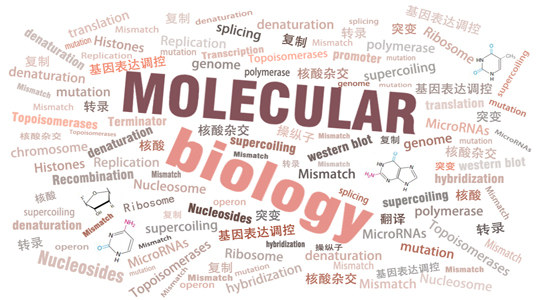
Introduction to Artificial Intelligence课程:前往报名学习
Artificial intelligence not only relates to so many high technologies, but also is applied different field such as military, industry, e-market, internet and so on. This course involves not only technologies including intelligence robotics, brain-computer interface, face recognition and so on, but philosophy thinking,such as what is the relation among mind,intelligence and body? So it will inspire you to think a lot of interesting problems related to human beings and society development.
开设学校:哈尔滨工程大学;学科:计算机、
Artificial intelligence not only relates to so many high technologies, but also is applied different field such as military, industry, e-market, internet and so on. This course involves not only technologies including intelligence robotics, brain-computer interface, face recognition and so on, but philosophy thinking,such as what is the relation among mind,intelligence and body? So it will inspire you to think a lot of interesting problems related to human beings and society development.
-Chapter 1 Homework
-1.1 Life intelligence and artificial intelligence
--1.1 Life intelligence and artificial intelligence
-1.2 The birth process of artificial Intelligence
--1.2 The birth process of artificial Intelligence
--1.2 The birth process of artificial Intelligence
-1.3 Multidisciplinary crossover artificial intelligence
--1.3 Multidisciplinary crossover artificial intelligence
--1.3 Multidisciplinary crossover artificial intelligence
-1.4 Big data concept
-1.5 Big data value and cases
--1.5 Big data value and cases
--1.5 Big data value and cases
-1.6 Research and application of artificial intelligence
--1.6 Research and application of artificial intelligence
--1.6 Research and application of artificial intelligence
-Chapter 2 Homework
-2.1 Artificial intelligence under big history
--2.1 Artificial intelligence under big history
--2.1 Artificial intelligence under big history
-2.2 The philosophical thinking about artificial intelligence
--2.2 The philosophical thinking about artificial intelligence
--2.2 The philosophical thinking about artificial intelligence
-2.3 Artificial intelligence consciousness, mind, body and intelligence
--2.3 Artificial intelligence consciousness, mind, body and intelligence
--2.3 Artificial intelligence consciousness, mind, body and intelligence
-2.4 The rational nature of artificial intelligence
--2.4 The rational nature of artificial intelligence
--2.4 The rational nature of artificial intelligence
-Chapter 3 Homework
-3.1 Brain structure and function
--3.1 Brain structure and function
--3.1 Brain structure and function
-3.2 Brain nervous system
-3.3 New finds of brain functions
--3.3 New finds of brain functions
--3.3 New finds of brain functions
-3.4 Cognition and intelligence
--3.4 Cognition and intelligence
--3.4 Cognition and intelligence
-Chapter 4 Homework
-4.1 Overview of artificial neural network
--4.1 Overview of artificial neural network
--4.1 Overview of artificial neural network
-4.2 Perceptron and feedforward neural network
--4.2 Perceptron and feedforward neural network
--4.2 Perceptron and feedforward neural network
-4.3 BP algorithm and application
--4.3 BP algorithm and application
--4.3 BP algorithm and application
-4.4 Convolutional neural network
--4.4 Convolutional neural network
--4.4 Convolutional neural network
-4.5 Deep neural network
-Chapter 5 Homework
-5.1 Supervised learning
-5.2 Basic theories and methods of deep learning
--5.2 Basic theories and methods of deep learning
--5.2 Basic theories and methods of deep learning
-5.3 Deep learning applications
--5.3 Deep learning applications
--5.3 Deep learning applications
-5.4 Reinforcement learning
-5.5 Transfer learning
-5.6 Machine game
-5.7 Machine art creation
-5.8 Machine intelligent design
--5.8 Machine intelligent design
--5.8 Machine intelligent design
-Chapter 6 Homework
-6.1 Digital image processing applications
--6.1 Digital image processing applications
--6.1 Digital image processing applications
-6.2 Computer vision
-6.3 Machine vision
-6.4 Machine vision applications
--6.4 Machine vision applications
--6.4 Machine vision applications
-6.5 Pattern recognition basics
--6.5 Pattern recognition basics
--6.5 Pattern recognition basics
-Chapter 7 Homework
-7.1 Knowledge representation
--7.1 Knowledge representation
--7.1 Knowledge representation
-7.2 Logic and reasoning
-7.3 Fuzzy reasoning
-7.4 Blind search method
-7.5 Knowledge graph
-Chapter 8 Homework
-8.1 General issues in natural language understanding
--8.1 General issues in natural language understanding
--8.1 General issues in natural language understanding
-8.2 Intelligence Q & A
-8.3 Speech recognition basics
--8.3 Speech recognition basics
--8.3 Speech recognition basics
-8.4 Introduction to machine translation
--8.4 Introduction to machine translation
--8.4 Introduction to machine translation
-Chapter 9 Homework
-9.1 Industrial robots
-9.2 Service robots
-9.3 Robot vision
-9.4 Mobile robot synchronous localization and map construction
--9.4 Mobile robot synchronous localization and map construction
--9.4 Mobile robot synchronous localization and map construction
-9.5 Path planning for mobile robots
--9.5 Path planning for mobile robots
--9.5 Path planning for mobile robots
-Chapter 10 Homework
-10.1 Basic concepts of hybrid intelligence
--10.1 Basic concepts of hybrid intelligence
--10.1 Basic concepts of hybrid intelligence
-10.2 Brain computer interface
--10.2 Brain computer interface
--10.2 Brain computer interface
-10.3 Wearable technology
-10.4 Exoskeleton technology
-Chapter 11 Homework
-11.1 Brain-like computing
-11.2 Artificial brain
-Chapter 12 Homework
-12.1 From digital manufacturing to intelligent manufacturing
--12.1 From digital manufacturing to intelligent manufacturing
--12.1 From digital manufacturing to intelligent manufacturing
-12.2 Intelligence medical
-12.3 Application of artificial intelligence in the military
--12.3 Application of artificial intelligence in the military
--12.3 Application of artificial intelligence in the military
-12.4 Intelligence city
-12.5 Artificial intelligence ethics
--12.5 Artificial intelligence ethics
--12.5 Artificial intelligence ethics
-12.6 Robot ethics
-12.7 Artificial intelligence law
莫宏伟,哈尔滨工程大学自动化学院教授,博士生导师,博士。哈尔滨工程大学自动化学院类脑计算与人工智能研究中心(筹)负责人,哈尔滨工程大学烟台研究院认知智能与海洋信息实验室(筹)负责人。主要研究方向:类脑计算与人工智能、智能机器人与无人机、机器视觉与机器认知、人机融合与混合智能。 2012年获得黑龙江省杰出青年基金资助。承担完成国家自然科学基金、国家重点研发计划、国防预研等项目22项。发表论文80余篇。出版专著6部,授权发明专利7项。 中国人工智能学会自然计算与数字城市专业委员会副主任,中国高校人工智能与大数据联盟常务理事,黑龙江省高等教育学会人工智能教育专业委员会发起人、理事长,黑龙江省生物医学工程学会理事。黑龙江省人工产业联盟副秘书长。黑龙江省人工智能学会前秘书长(2008-2019), “黑龙江省人工智能产业发展推进意见”(2019-2030)核心专家。哈尔滨市新一代人工智能创新发展试验区规划专家组专家。科技部科技项目评议专家。国家自然科学基金委员会评议专家。教育部学位与研究生教育发展中心专家,博士点基金评审专家,福建、广西、河北、北京等多个省地项目评审专家。 第16届中国神经网络大会组委会主席,秘书长。2013ICSI会议主席。担任2017国际生物启发的计算理论与应用(BICTA2017)程序委员会主席以及40多个国际会议程序委员会委员。Research of Information Technology、International Journal of Swarm Intelligence Research、《电子学报》、《数据挖掘》等编委。IEEE Tran on Industrial Informatics 2018 专刊《医疗卫生中的大数据处理》副主编。 担任哈尔滨工程大学世界大学生机器人大赛ROBOCON团队指导教师,哈尔滨工程大学奇点人工智能学生社团创建及指导教师。2005-至今,担任哈尔滨工程大学本科生创新创业实践课程《人工智能理论与技术创新实践》、自动化学院《人工智能导论》、《智能科学与技术导论》、自动化学院研究生专业课《人工智能原理与方法》、硕士留学生课程《人工智能原理与方法》、博士留学生课程《模式识别与智能系统》主讲教师。
